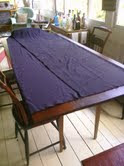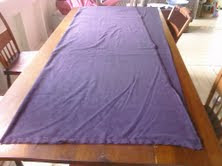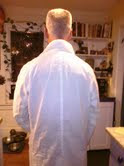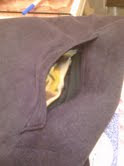
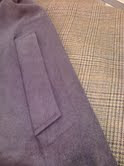
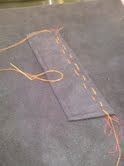

Against all your wise advice, I've cut out the coat and started construction. BTW here's a photo of the design. Black flannel... Yawn. Maybe now you can see why a contrasting collar might bring this severe design a little life. One of the photos shows the wool glen plaid fabric that I'll be using for the upper collar. It's shot through with rust and purple, so it coordinates nicely. The first step in construction is the welt/flap pockets. Thank goodness I did a dry run on the muslin. These have to be the most over complicated pockets in the world, and I immediately went running to my Bishop Method book for advice and a more reasonable alternative. According to Edna only 3 pieces are required, an upper and lower pocket and the welt. The Japanese nightmare consists of 5 pieces, one of which is a piece of the fashion fabric sewn inside the pocket that will never be seen. Sorry, that step is out. I did keep an interfaced piece of my fabric placed above the pocket and held in place with top stitching. Because this is a Fall coat, and I love warm hands, I used flannel for the lower pocket and a piece of lining material for the upper pocket. I'm glad this step is over. The next challenge will be an inside chest pocket, but I will need to cut out part of the lining before attempting it.
